
|
Special Effects (F/X) - Milestones in Film 1930-1939 |
| Film Title/Year and Description of Visual-Special Effects | |||||
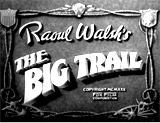
|
The Big Trail (1930) Fox Film Corporation led the way in developing early prototypes of widescreen films at the start of the talkies, with the introduction of 70mm Grandeur, for The Big Trail (1930), with John Wayne in his first leading role. Unfortunately, theaters couldn't afford the equipment necessary to show a film in 70mm Grandeur, and the film flopped, and led to the studio's filing for bankruptcy. |
||||
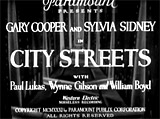
|
City Streets (1931) An early talkie gangster film starring Gary Cooper (as a shooting gallery sharpshooter named The Kid), director Rouben Mamoulian's City Streets (1931) (his second feature film), was notable as the first American film to have a voice-over, during a close-up of the tear-stained face of Nan Cooley (Sylvia Sidney), the stepdaughter of mobster Pop Cooley (Guy Kibbee), as she recalled the past during a flashback. The scene superimposed the Kid's voice over her face as she remembered his words and thought her own out-loud. [Hitchcock already exhibited a voice-over in the sound version of the British film Blackmail (1929).] |
 
|
|||

|
M (1931, Ger.) Director Fritz Lang experimented with sound (and the striking pioneering use of leitmotif, to associate a sound with a film character) in this early crime film (and Lang's first sound film). It starred Peter Lorre (in his first lead role) as Hans Beckert - a child serial murderer. In the plot, a blind balloon salesman (Georg John) heard the killer's haunting, tell-tale whistling of "In the Hall of the Mountain King" from Edvard Grieg's Peer Gynt Suite No. 1 before an off-screen killing. |

|
|||
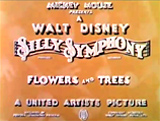
|
Flowers and Trees (1932) The first commercially-released animation in full three-color (or three-strip) Technicolor was the 29th of Disney's short Silly Symphonies: Flowers and Trees with anthropomorphic characters - it produced Disney's first Academy Award (in the Best Short Subjects: Cartoons category), the first of Walt's 32 personal Academy Awards. |

|
|||

|
Love Me Tonight (1932) Rouben Mamoulian's inventive romantic comedy/musical starring Jeanette MacDonald and Maurice Chevalier was credited as having the first use of the zoom lens (a zoom, without a dolly shot - toward and into an apartment window) and asynchronous sound. It also had an abundance of tracking shots, slow motion and fast motion (and even split-screen). |
  Start-End of Zoom Shot  Split-screen |
|||

|
Deluge (1933) This RKO film was the first end-of-the-world, big-budget disaster/science-fiction film in the sound era, featuring revolutionary visual effects to depict an earthquake and simulate turbulent tidal waves hitting New York City, due to an eclipse of the sun. A vast model of the city was built on a huge platform 100 feet square, with buildings up to 12 feet tall made of thin plaster molds. Various portions of the platform were rigged on moveable rollers to simulate the movement of an earthquake. The vast tidal wave, the film's highlight, was simulated by dumping large amounts of water from tanks onto the 'miniature' city. The only surviving print (found in the 1990s) had been dubbed into Italian, so therefore, the US video release has English subtitles. |
 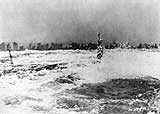
|
|||

|
The Invisible Man (1933) This film showcased early attempts at visual/special effects by double-exposing and overlaying elements together, using both live physical effects and traveling-matte photography. In the film's final scene, the invisible man Jack Griffin (Claude Rains) died - and as he expired, his face was slowly revealed and became visible by stages - first the skull, then flesh, and then his full face. It was a startling effect for audiences. Other special effects included dancing clothes, a bicycle without a rider, footprints appearing in the snow. |

|
|||
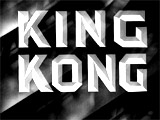
|
FX scenes included the fight-to-the-death scene of Kong with a Tyrannosaurus Rex and with a pterodactyl, and the finale - Kong's own death atop New York's Empire State Building, filmed one-frame at a time with stop-motion animation. Ann (Fay Wray) in his grasp - filmed separately with a giant ape fist model, was then combined with the ape footage.
Because Kong's fur (rabbit hair)
was pushed down every time animators handled him for the stop-motion
photography, his skin appeared to ripple as a result. |
  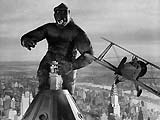
|
|||

|
Audioscopiks (1935) MGM's Audioscopiks (1935) was the first 3D movie nominated for an Oscar, in the category of Best Short Subject, Novelty (made by Pete Smith with his commentary). It was MGM's first film to be shot in 3-D. It advertised to its younger audiences: "Don't Forget to Duck" and "A Joyride in Third Dimension." The semi-documentary narrated film explained depth perception and various elements of human eyesight, and then demonstrated the effects of 3D by projecting objects at the audience:
|
  
|
|||
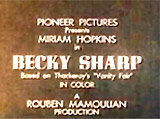
|
Becky Sharp (1935) Director Rouben Mamoulian's period drama, an adaptation of William Makepeace Thackeray's classic novel Vanity Fair, was a major milestone in film technology. It was the first feature film to exhibit the landmark three-color Technicolor - a new and expensive technology process. The sight of brilliant and rich colors was taken advantage of in the film's opening sequence - a grand ball scene set in Brussels on the eve of and within sight of the Battle of Waterloo in 1815. Waltzing couples in colorful ball gowns were interrupted by cannon fire (thought at first to be thunder) that exploded open the tall, curtained full-length French windows and extinguished the lights, resulting in complete pandemonium. English soldiers in scarlet uniforms (with capes) and gold helmets reacted and responded by rushing out to fight against Napoleon. To emphasize the sharp transition from black and white to color compositions from now on, director Mamoulian set up one stunning and clever contrast shot. Two red-jacketed soldiers were speaking in the foreground to Becky Sharp (Miriam Hopkins) and wealthy friend Amelia Sedley (Frances Dee) - seen only in b/w silhouette behind a curtain in the background. |
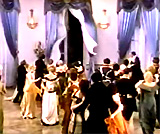 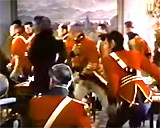 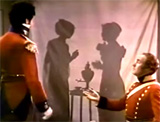
|
|||
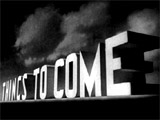
|
Things to Come (1936, UK) H.G. Wells' 1933 novel The Shape of Things to Come was adapted by producer Alexander Korda into this classic and prophetic science-fiction film that time-traveled from 1936 to 2036 A.D. Although the special effects were primitive, they were dazzling for the time. The fictional British city of Everytown, built underground by the year 2036, was created by integrating both miniatures and set pieces together. The pristine advanced city was displayed with terraces, walkways, monorails and glass elevators. In the film's final section, it portrayed a time of space exploration when a "Big Gun" was built and poised to rocket two explorers around the moon. |
  
|
|||
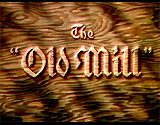
|
The Old Mill (1937)
It won the Academy Award for Best Animated Short Film in 1938. |

|
|||
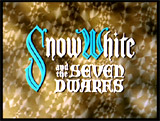
|
It won an honorary Academy Award for Walt Disney "as a significant screen innovation which has charmed millions and pioneered a great new entertainment field." [Note: See animated films for the history of animation movies.] |
  |
|||

|
The Hunchback of Notre Dame (1939) Matte artist Chesley Bonestell created the extraordinary matte paintings used in this film to recreate Notre Dame Cathedral and medieval Paris. |

|
|||

|
The Rains Came (1939) With great special effects, featuring rainstorms (monsoons), and a violent earthquake in Ranchipur that burst a huge dam and sent a wall of water through the center of the city, causing a major flood and the collapse of a temple. The footage was engineered by special effects technician Fred Sersen, along with photographic work by E.H. Hansen. |
 
|
|||
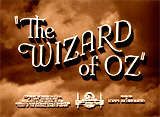
|
Although it's an impressive sight - the 'twister' threatening Dorothy's (Judy Garland) Kansas farmhouse - was literally a huge silk stocking twisted (funnel-shaped) and coiling by a blowing fan - when seen at a middle distance. However, shots of the tornado at a far distance used actual tornado footage. When shown in closeup, it was a gigantic burlap bag that emitted a cloud of dust. The film also made considerable use of matte paintings - projections or paintings placed behind foreground objects to trick audiences into believing the actors were in a different location (for example, the view of the Emerald City at the end of the Yellow Brick Road). |
 
|
|||